Can I Take Acrylic Painting Off Stretcher and Roll

Rolling acrylic paintings for storage and shipping is a fairly common practice, and many painters have likely rolled, un-rolled, and re-rolled their own paintings with some success. However, while we know it can be done, it is still not our best recommendation. There are definite risks to be aware of, such as the imprinting or ferrotyping of the surface, the sticking of interleave materials, and sometimes cracking if handled at cold temperatures. Some materials, like paper or bubble wrap, can also leave pieces stuck to the surface, creating a major restoration project that may never get the work back to its original state. The first part of this article will address these issues in more depth, and show examples of the type of damage that can occur when rolling acrylic paintings using some typical interleaf materials. In the second part, we will share what to do if you feel you must roll and ship your painting.
Testing
We tested 7 pieces of canvas painted with 1:2 blends of Fluid Carbon Black and Regular Gel in Gloss, Semi-Gloss and Matte sheens. These mixtures of 2 parts Gel and 1 part paint were applied in three areas on each piece of canvas with a palette knife, creating both smooth and textured surfaces, and allowed to dry for a week. The 10″ x 15″ pieces of canvas were then rolled paint side out on 2″ diameter cardboard rolls with a range of inter-leaving materials:
- No inter-leaving
- Polyethylene Plastic
- Dartek film (Nylon)
- Silicone Release Paper
- White Kraft Paper
- Tissue Paper
- Glassine
We also tested a panel that had a glossy acrylic surface wrapped with bubble wrap for several weeks at a range of temperatures. The damage to the surface is quite evident in the photo below:
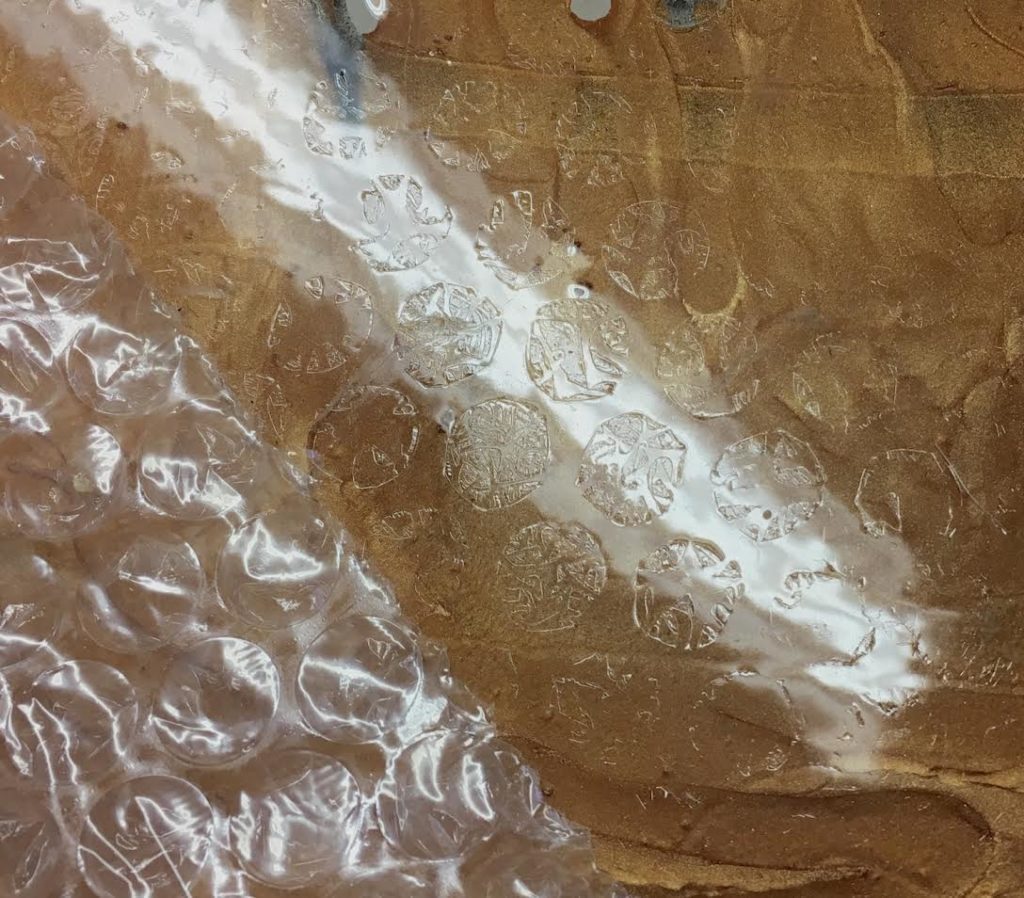
Temperature
Fine art grade acrylic paint and medium films are generally quite flexible, and so can be rolled easily at warmer temperatures, but this inherent thermo-plastic nature of acrylic allows it to go back and forth throughout its life, moving from very soft and flexible at warmer temperatures, to harder and potentially brittle at very cold ones. These changing characteristics can cause problems when the painted surface is in close contact with another surface for an extended period of time, or when suddenly flexed or shocked at cold temperatures.
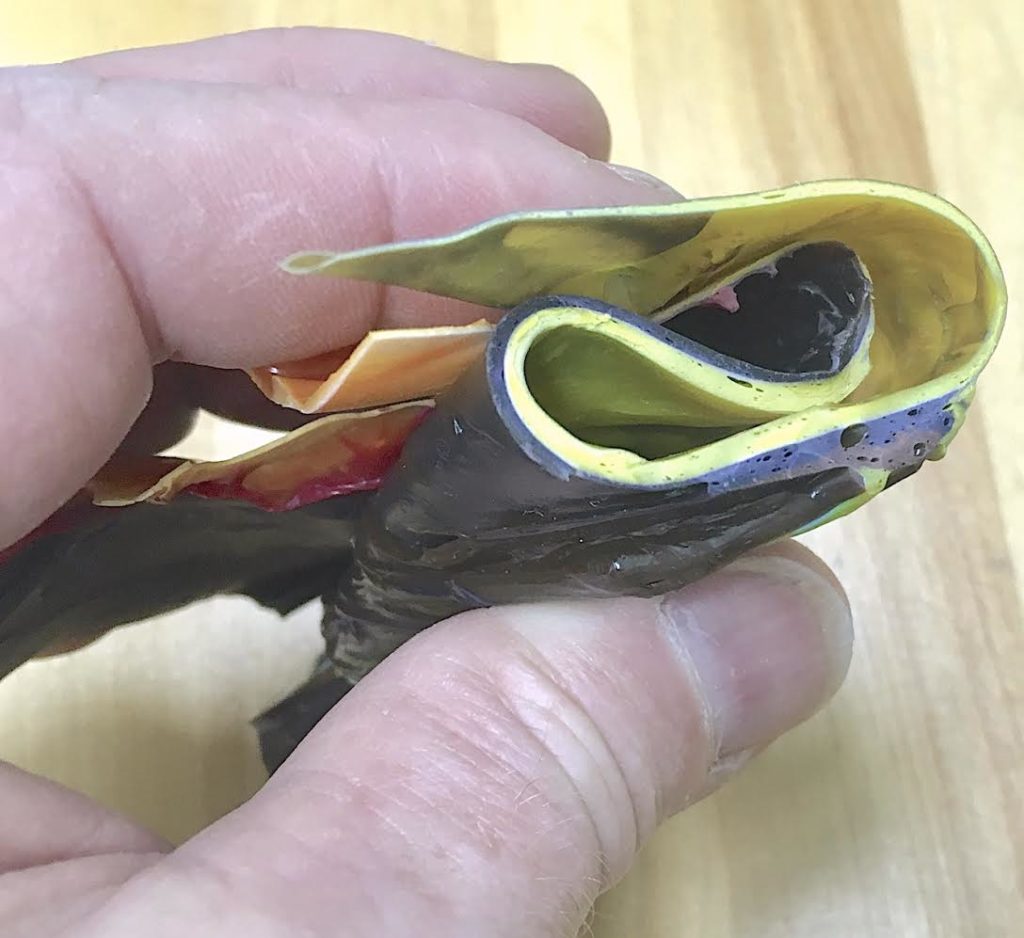
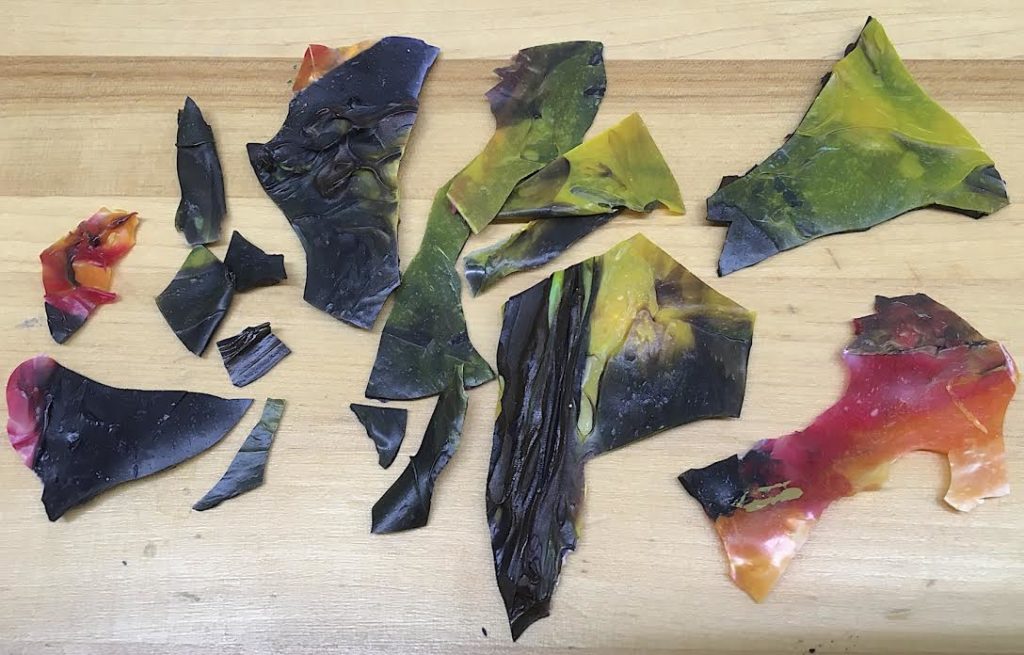
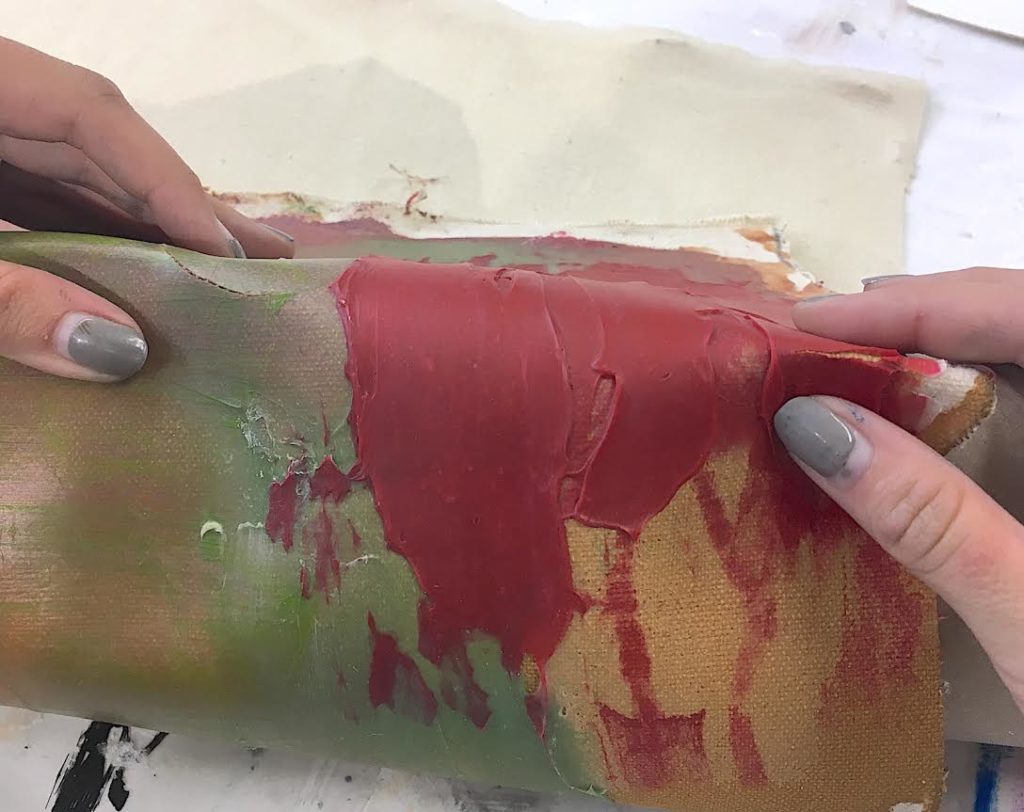
Interleaving Materials
Glossy acrylic paintings will be much more susceptible to imprinting and surface change, even if non-stick materials such as polyethylene plastic sheeting, or silicone release paper are used. With enough pressure, heat and time, sticking and ferrotyping can still occur. While polyethylene sheeting can be peeled off , its creases and even the micro-texture of its surface can still leave a lasting change. We have even seen silicone release paper stick to acrylic films after weeks of pressure and warm temperatures.
Matte surfaces will be less prone to sticking, but thicker layers can still be compressed and imprinted. A matte acrylic can also become glossy if burnished or pressed against a very smooth material, while a glossy acrylic can become matte if pressed against a textured one. Stain paintings, and very thinly painted matte surfaces, can often be rolled and unrolled with much lower risks and usually with no noticeable damage since the paint has become so integrated into the canvas or ground.
The following images point out the most significant damages. Polyethylene Plastic, Dartek Film or Silicone Release Paper were able to be removed without any tears, but there were still changes to some of the surfaces, especially any raised or textured areas. Rolling with no interleaf material was not terrible, but of course left canvas texture imprinted on raised areas and even some canvas fibers stuck in places. Rolling with the paint against the cardboard tube picked up fibers from the cardboard on glossy raised areas. As expected, it appears that relatively thinly applied acrylic paint, especially with lower sheens, can be rolled successfully with minimal visible changes to the surface, but we would still caution that we feel there will always be some risk.
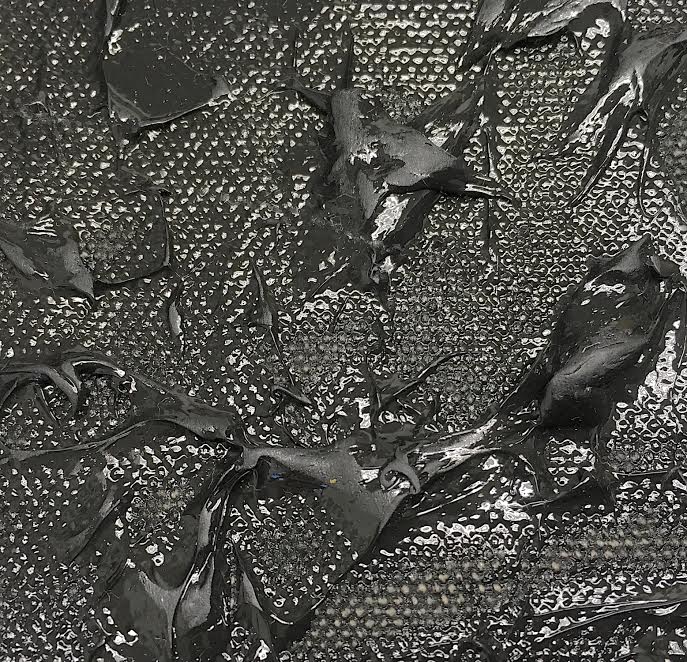
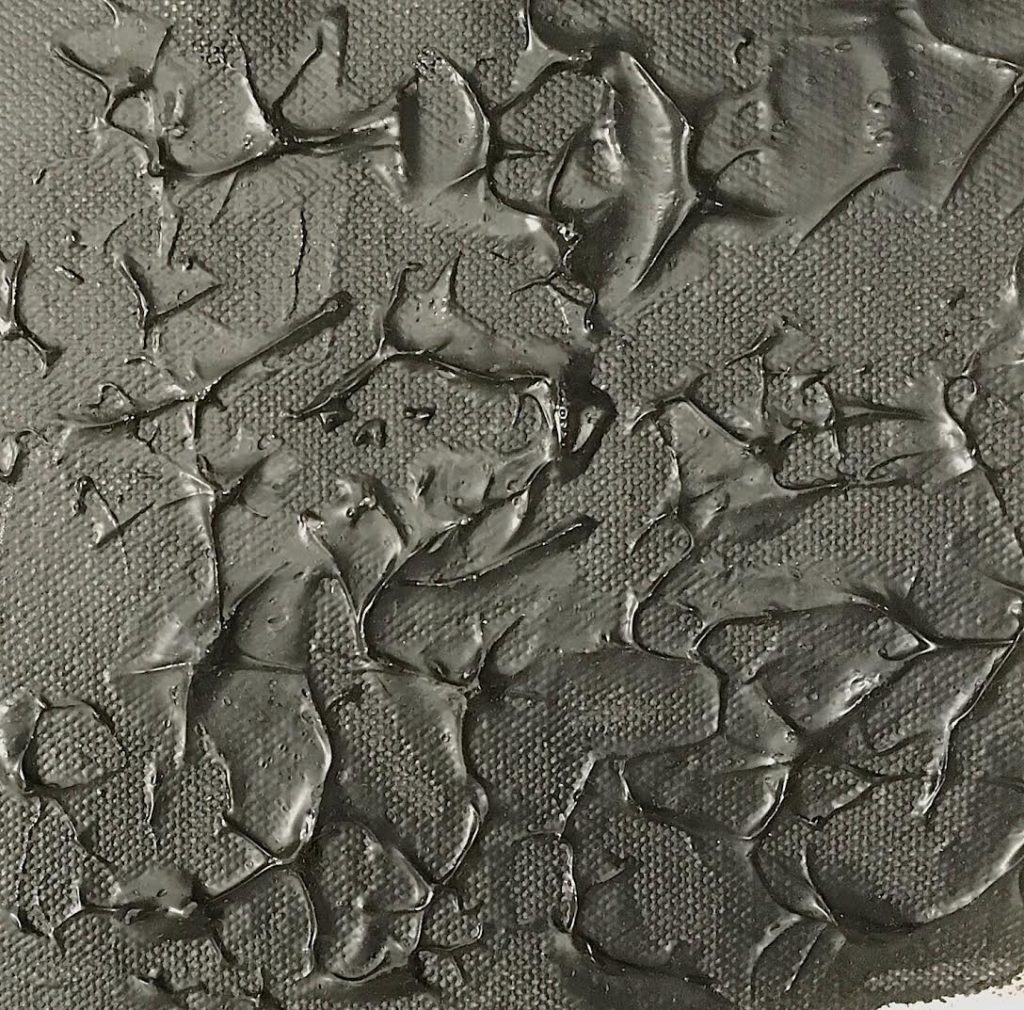
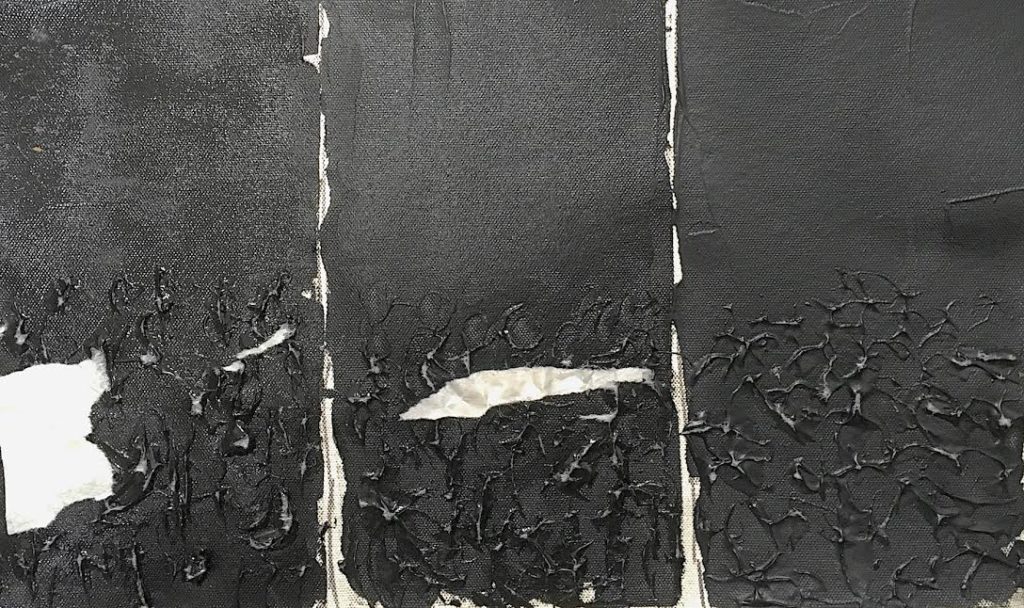
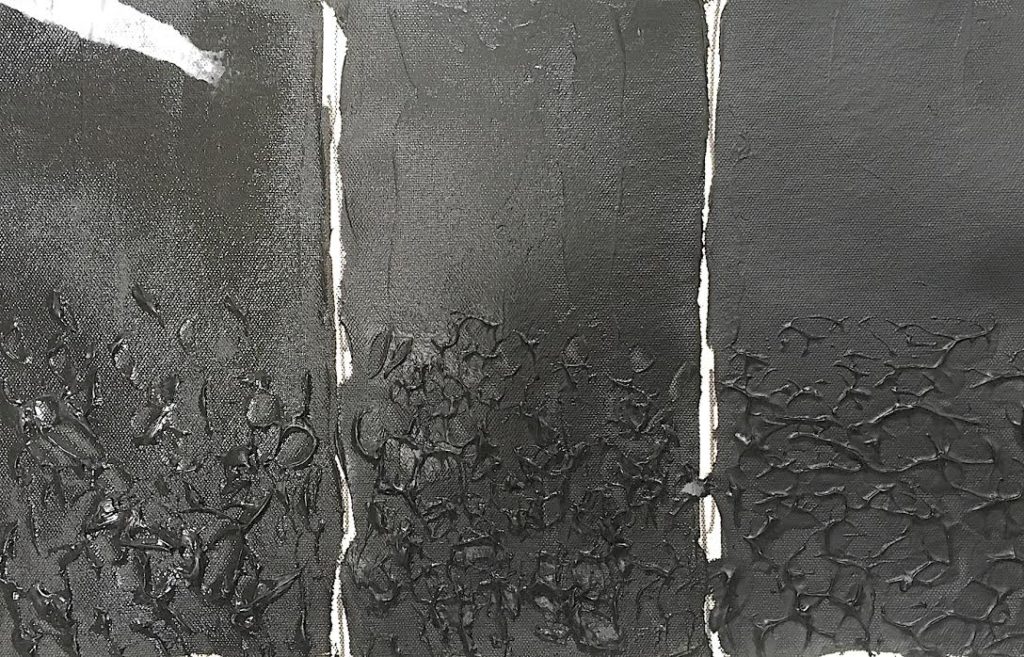
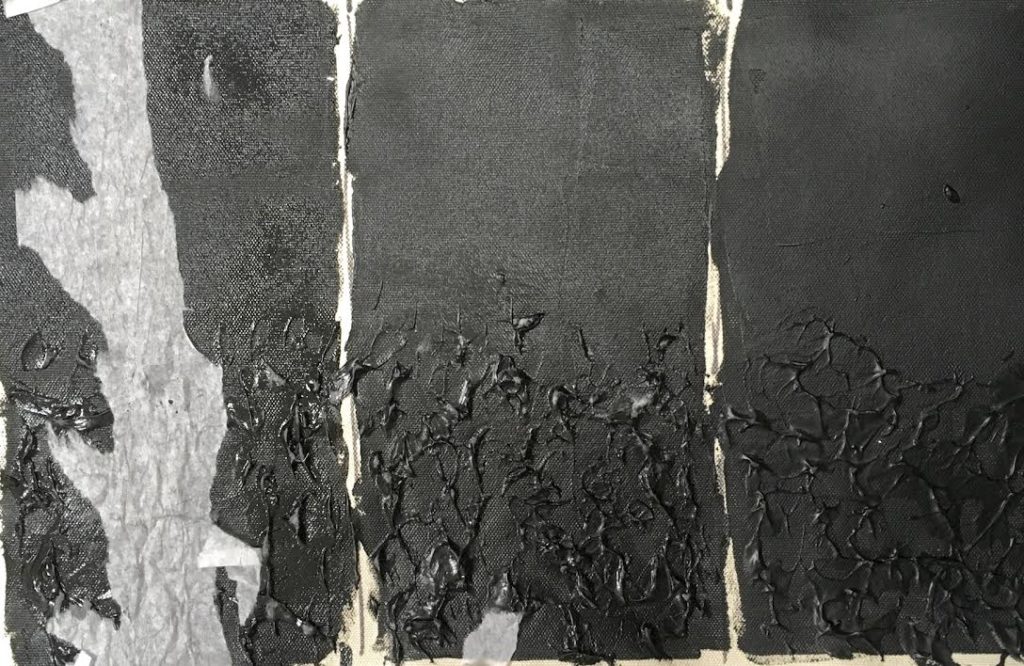
Paintings rolled with no interleaf material will tend to be imprinted by the canvas texture pressing directly against the surface, dulling glossy surfaces and sometimes causing canvas fibers to get stuck to the acrylic. Glossier paint in particular can stick to most surfaces and, even if the material can be peeled off, will leave a changed surface at some level. So simply using a material that does not stick to a relatively soft and tacky acrylic film does not insure success. It is better than peeling hundreds of small pieces of bubble wrap plastic or tissue paper from the surface of your painting, but the result is still a permanently damaged piece of art.
Recommendations
The only way to ensure that a painting will survive shipping or storage with no changes to the surface and appearance of the work is to have nothing touching the painted surface and nothing causing any pressure from either the front or back. This continues to be our best recommendation and something we have covered in this Just Paint article:
Safe Handling and Transportation of Acrylic Paintings
However, because this is not always possible, we wanted to provide at least one potential way to roll paintings that should help lessen some of the risks even if it cannot remove them altogether. Please note that the following method assumes rolling, unrolling and shipping in a climate controlled environment. As we showed earlier, acrylics can get quite brittle at colder temperatures and can crack if flexed, shocked or suddenly creased. As with all rolled paintings, this works best with a relatively thinly painted work having a satin or matte surface. The glossier the painting, and the thicker the textures, the greater the chance of damage.
A Method for Packing a Rolled Acrylic Painting for Shipping
Materials:
- Double wall custom box to accommodate measurements
- silicone release paper
- white foam roll 1/16th poly foam
- Thin wall 10″ Diameter tube, 4 " longer than painting width ( sonotubes work well )
- Masking Tape
- ½" rigid insulation foam to line box and make "donut" at each end.
Method:
- Wrap 10" diameter tube in thin packing foam sheet. Foam can be spiraled onto tube. Leave 2 inches blank on ends of tube. Tube must fit into recessed holes at each end of the box.
- Painting is laid face-down onto silicone release paper. Thin foam sheet placed on top of this, covers back side of painting entirely. Foam sheet can be seamed with tape but seam/tape side doesn't contact the canvas.
- Painting is rolled onto already-padded tube and secured at edges with tape.
- Painting roll is covered with plastic sheet but plastic is not contacting any surface of the canvas. Taped to secure onto tube so it doesn't shift.
- Pre-cut "donuts" fit onto ends of tube. Secure with tape. The entire thing is placed into the box so the tube is suspended. 3-4 Inches around tube to sides of box. Nothing touches artwork other than the silicone release paper.
Artwork is suspended inside the box with very little pressure on the surface of the painted side of the work.

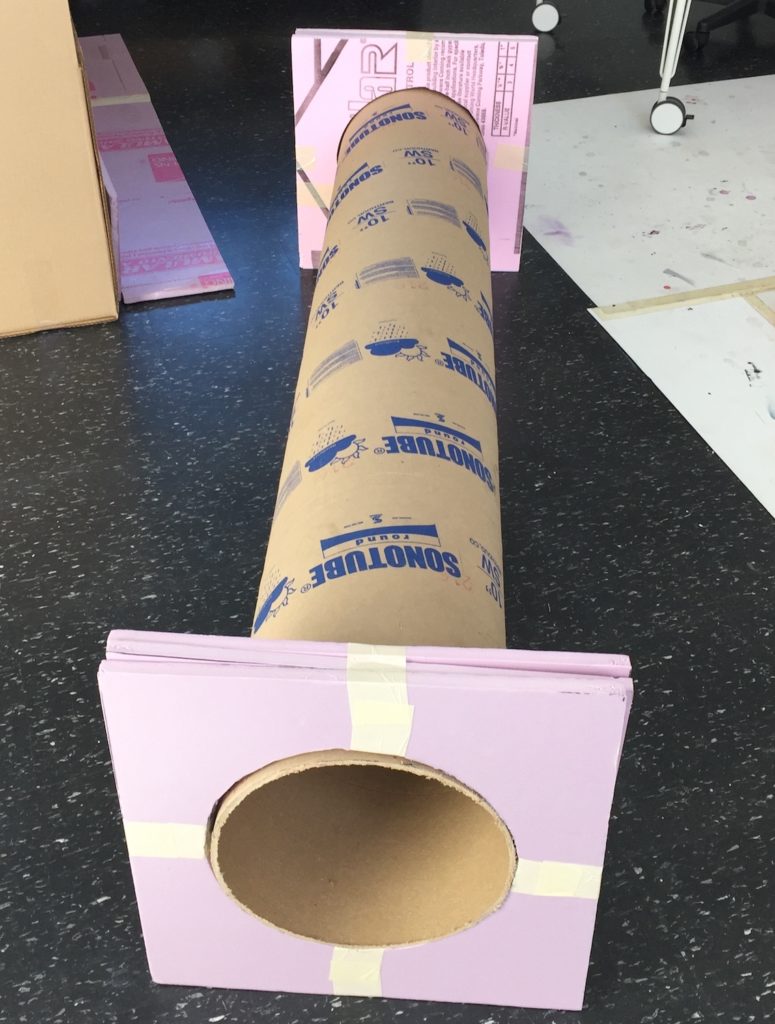
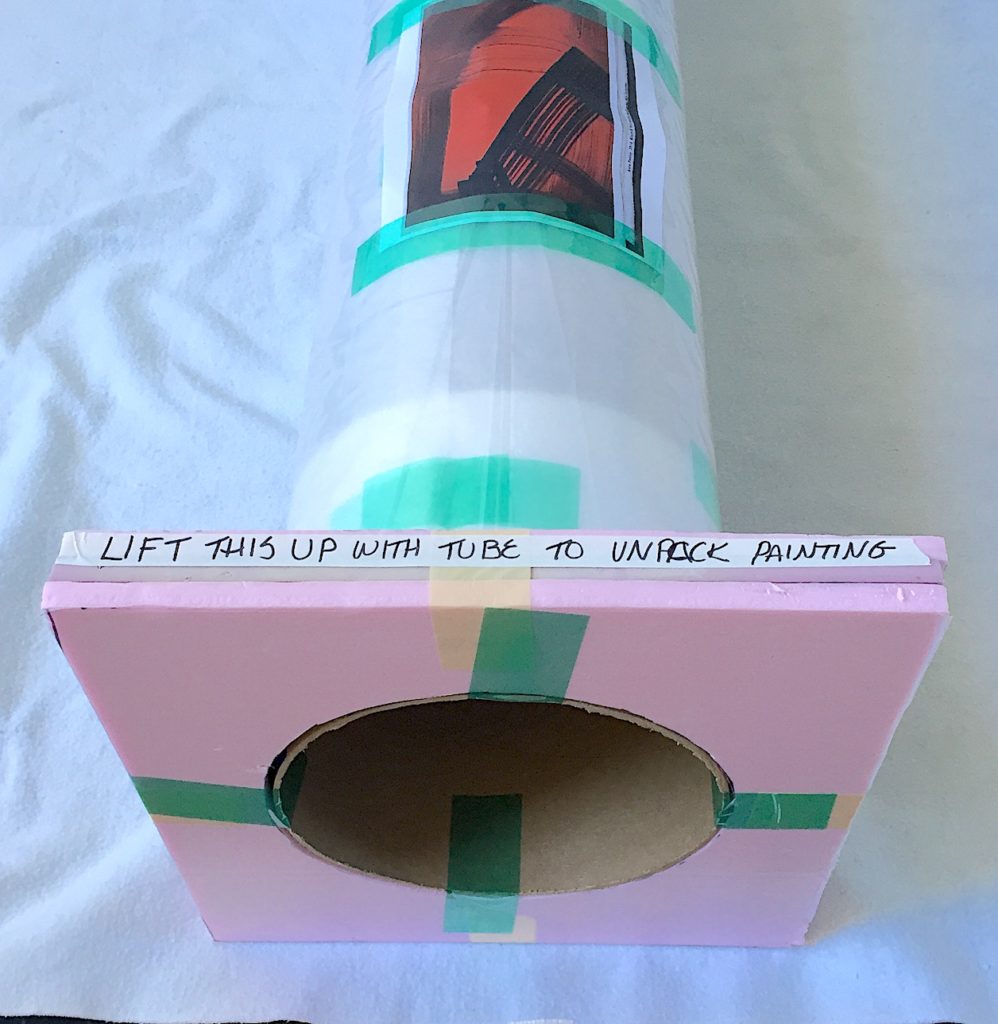
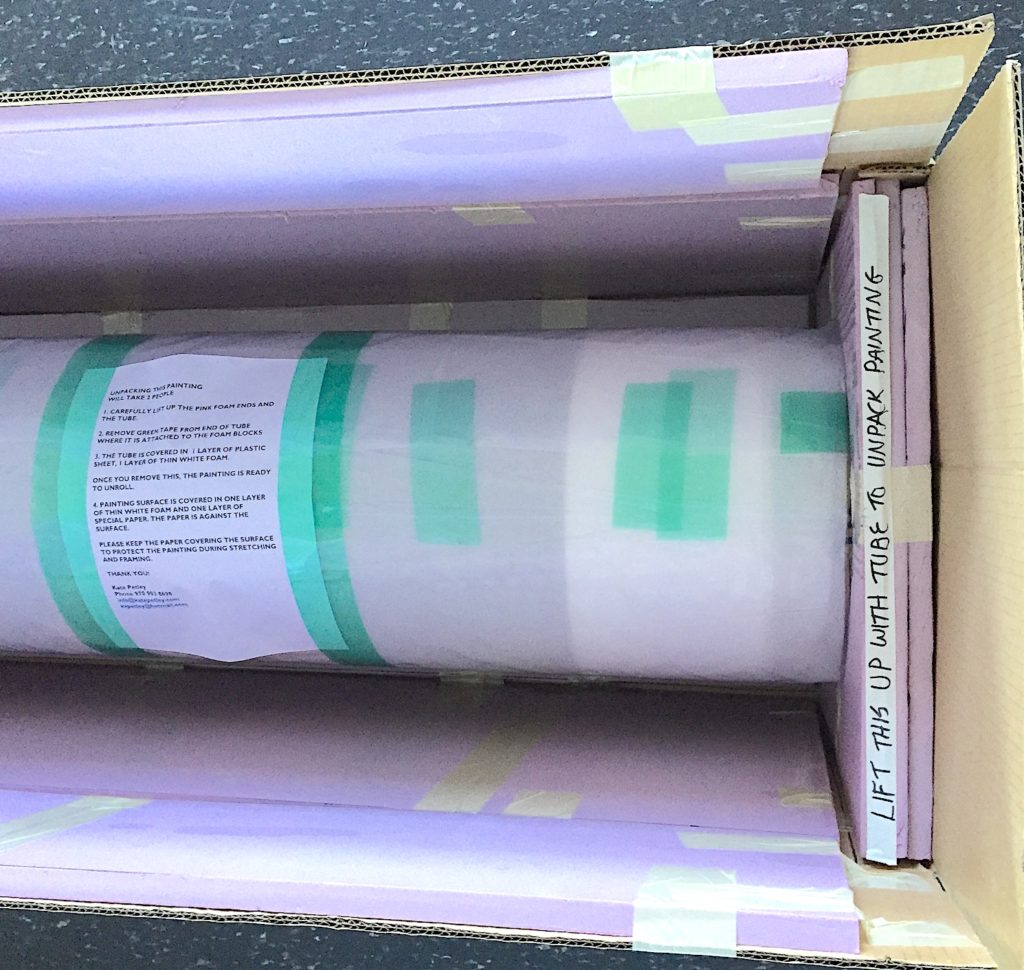
We would like to thank artist Kate Petley who was very kind and generous in allowing us to use some of her photos, ideas and methods for packing rolled acrylic paintings.
As always if you have questions, let us know in the comments or email us at help@goldenpaints.com.
Can I Take Acrylic Painting Off Stretcher and Roll
Source: https://justpaint.org/rolling-acrylic-paintings-for-shipping-or-storage/
0 Response to "Can I Take Acrylic Painting Off Stretcher and Roll"
Post a Comment